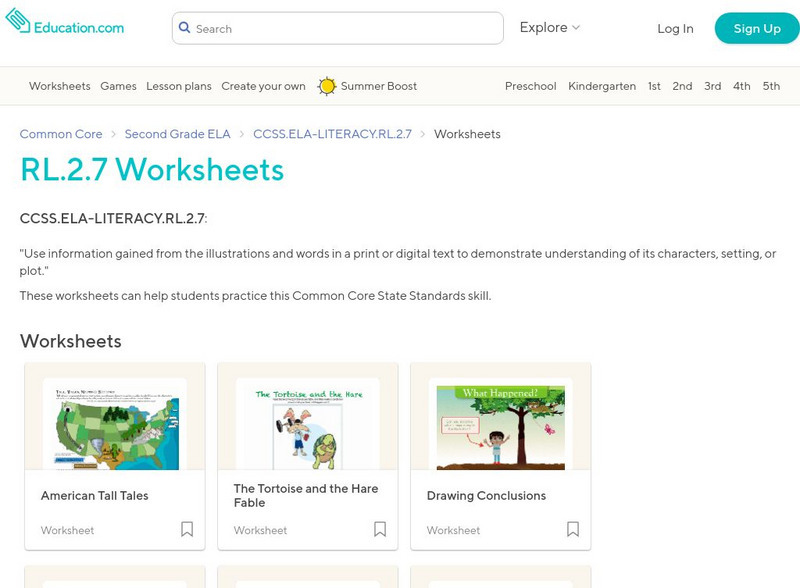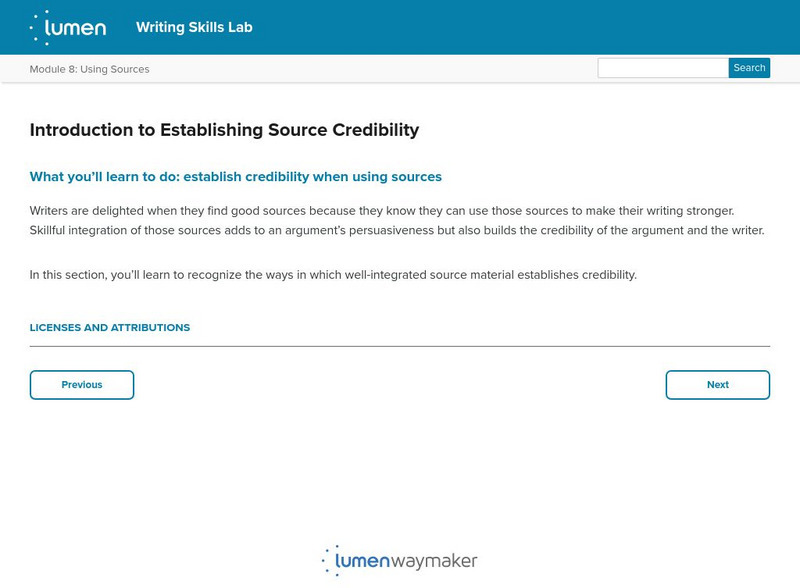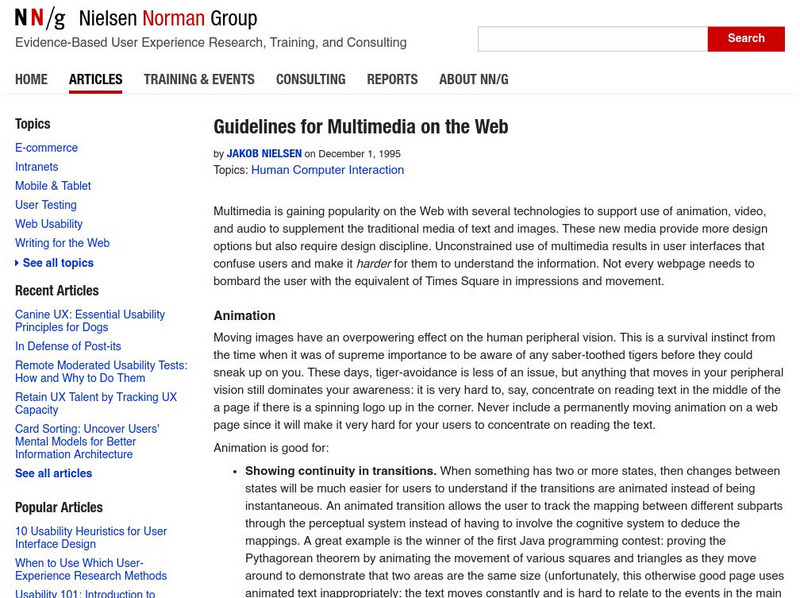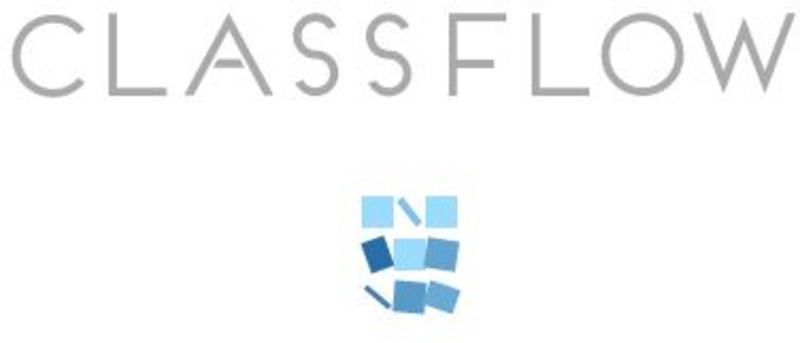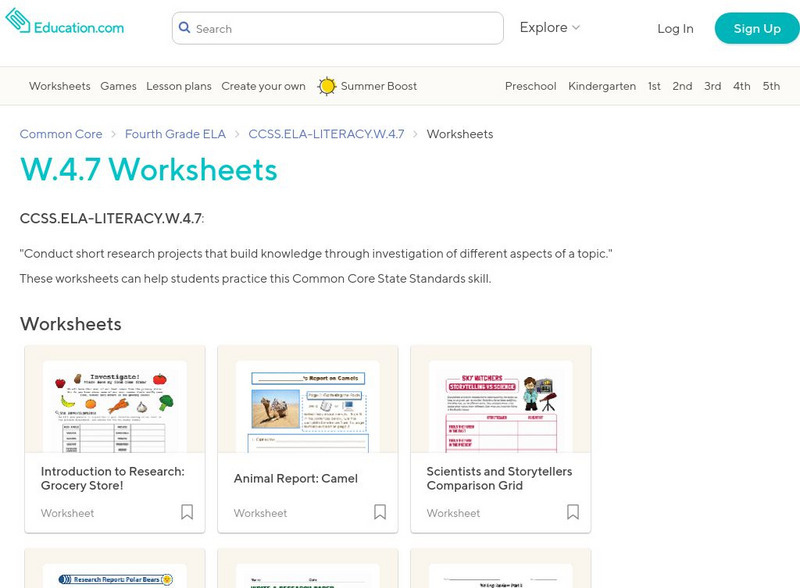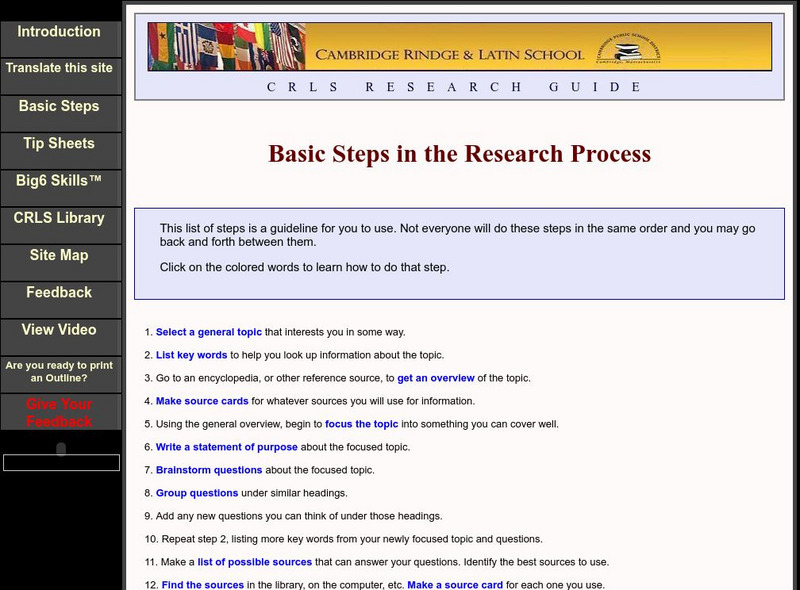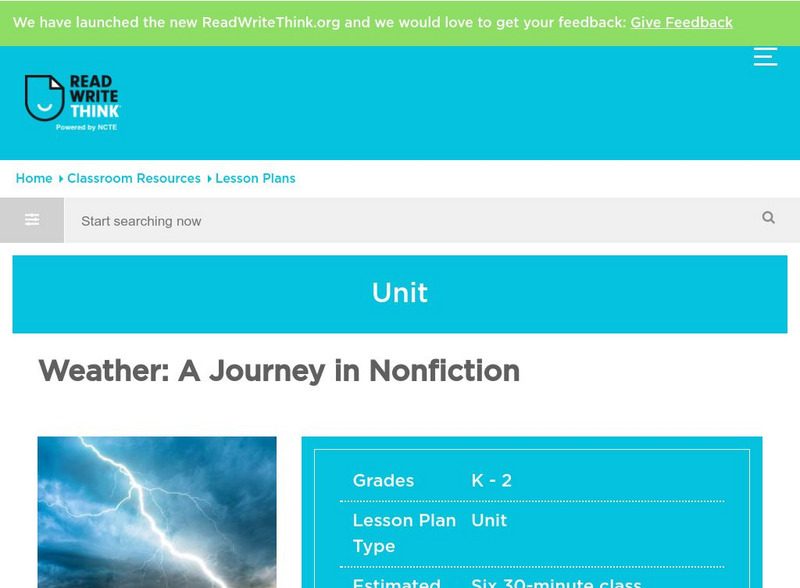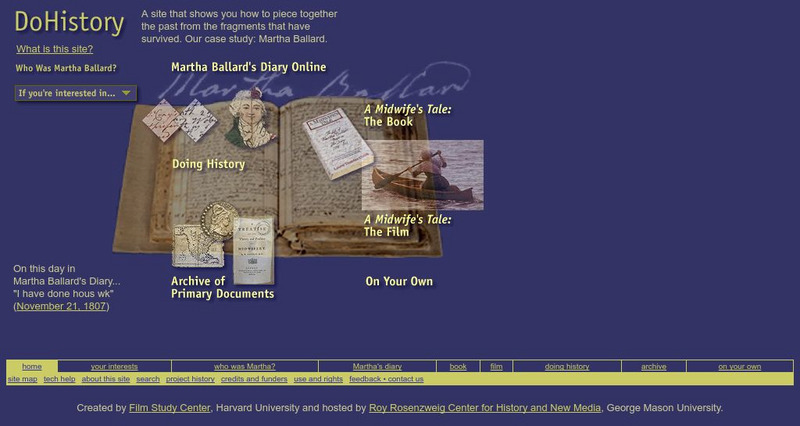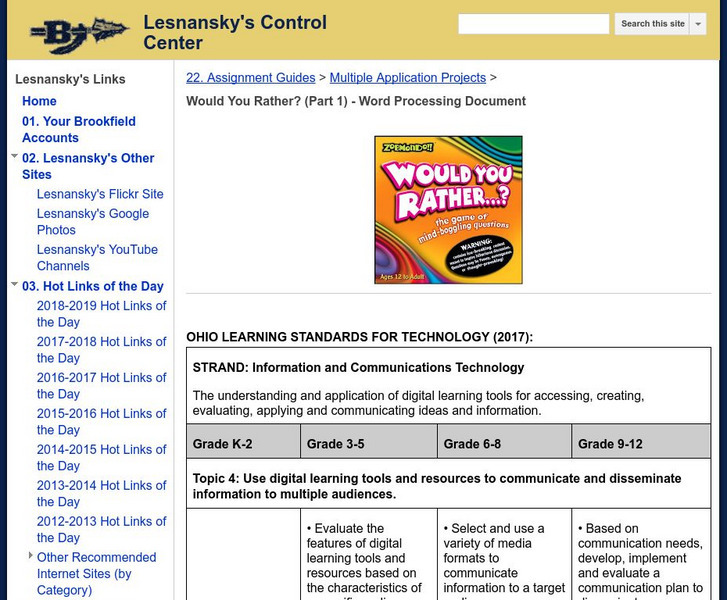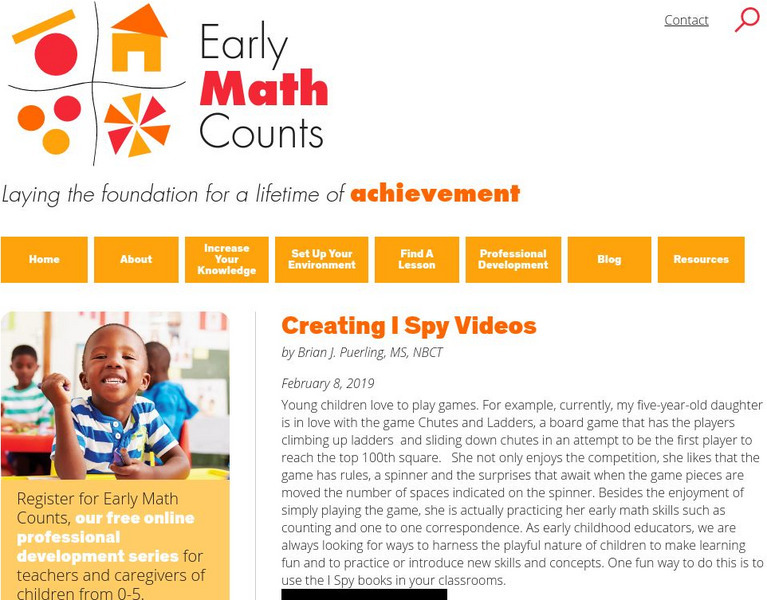Hi, what do you want to do?
TED Talks
Ted: Ted Ed: Visualizing the World's Twitter Data
Good morning, Twitter! Millions of tweets are sent everyday, and from these tweets, we can gather a lot of information about people's lives: where they travel, when they wake up, and their opinions on pretty much everything. Jer Thorp...
CommonLit
Common Lit: The Wounded Knee Massacre
A learning module that begins with "The Wounded Knee Massacre" from Digital History, accompanied by guided reading questions, assessment questions, and discussion questions. The text can be printed as a PDF or assigned online through...
Alabama Learning Exchange
Alex: Leaders of Our School
In this lesson, learners will interview administrators and faculty within the school in order to learn the importance of leadership and teamwork. Then students will create a slideshow using digital cameras and presentation software.
Education.com
Education.com: Rl.2.7 Worksheets
[Free Registration/Login Required] Choose from a variety of worksheets to help students practice the Common Core Standard of using information gained from the illustrations and words in a print or digital text to demonstrate...
Lumen Learning
Lumen: Using Sources: Introduction to Establishing Source Credibility
This is an introduction to establishing credibility by using appropriate integration of source material. Click on the Next button at the bottom right to get to more information about how to establish credibility through integration....
Other
Nielsen Norman Group: Guidelines for Multimedia on the Web
Guidelines on how to design presentations for web media. This is an old article and some of the information is outdated, but much is still relevant. SL.9-10.5 Audio Visuals, RI.11-12.7 Eval Different Media/format....
ClassFlow
Class Flow: Research Questions
[Free Registration/Login Required] This lesson explores the steps of the research process - selecting an appropriate research topic, and delving more into the topic.CCSS.ELA-Literacy.CCRA.W.8
ClassFlow
Class Flow: Dictionary
[Free Registration/Login Required] Students will recognize the functions of dictionaries and the types of information available in dictionaries used in schools. They will learn the differences between dictionaries and thesauruses....
ClassFlow
Class Flow: Dictionary Use
[Free Registration/Login Required] This resource introduces students to dictionaries. It covers what a dictionary is used for, what types of information you will find in a dictionary, guide words and their purpose, and how to use a...
Education.com
Education.com: W.4.7 Worksheets: Conduct Short Research Projects
[Free Registration/Login Required] A site with links to 6 worksheets that can be downloaded and printed for student use while building skills with standard W.4.7: Conduct short research projects that build knowledge through investigation...
Other
Global Internet Liberty Campaign: Regardless of Frontiers
"Protecting the Human Right to Freedom of Expression on the Global Internet" is the resource's topic. Lists the Global Internet Liberty Campaign's principles for promoting human rights and civil liberties. Introduction and overview...
Cambridge Rindge & Latin School
Cambridge Rindge & Latin School: Basic Steps in the Research Process
A comprehensive list of the important steps in researching and writing a report or project. Includes links to tip sheets for each step.
ReadWriteThink
Read Write Think: A Picture's Worth a Thousand Words: Image to Narrative
This lesson, which can be adapted to fit with any picture you choose, works for middle schoolers of all levels.
Other
Brookfield High School: Lesnansky's Control Center: Would You Rather? (Part 2)
In this activity, students will create a customized Google Form that will showcase the four dilemmas defined by the game cards from Would You Rather...? and then share the form with others to collect data for analysis. Lots of Would You...
Center for Literacy and Disability Studies, University of North Carolina at Chapel Hill
University of North Carolina: Tar Heel Reader
Students can create, illustrate, and publish books for beginning readers, which are made available for the public to read. Authors must go through the free registration process in order to create a book.
ReadWriteThink
Read Write Think: Weather: A Journey in Nonfiction
Questions about weather clear up when students use what they learned from their books to create a presentation to share with the rest of the class.
Other
Graphic Greats: Photo Treatment
This resource presents an article about the use of photos in documents.
ReadWriteThink
Read Write Think: Exploring Character Through Images
This lesson plan explores Curious George in relation to images conveying character. Included in the lesson plan is an overview, practice, objectives, resources, preparation, and more.
Online Writing Lab at Purdue University
Purdue University Owl: Types of Sources
A list and explanation of different types of print and online sources. W.11-12.8 Sources/Integrate/Cite
University of Illinois
University of Illinois: Early Math Counts: Designing Virtual Lands!
This article describes activities to do with young children using apps where they can build structures. It discusses two possible apps to try - Toca Builder and Blokify. Links to videos that tell you more about these apps are included.
Other
Do History: Using Primary Sources
This site explains the difference between a primary and secondary source. It also provides students with questions to ask when gathering evidence about a primary source document.
Other
Brookfield High School: Lesnansky's Control Center: Would You Rather? (Part 1)
In this activity, students will create a word processing document that will define four dilemmas in the game cards from Would You Rather? Lots of Would You Rather question examples can be found online. (The Part 2 lesson can be found by...
University of Illinois
University of Illinois: Early Math Counts: Creating I Spy Videos
This article describes how young children can create their own I Spy videos using the Draw and Tell app by Duck Duck Moose. It includes a link to a video showing a tour of Walter Wick's studio - he authored the 'I Spy' and 'Can You See...
Other
The Topic: Charts and Graphs
Brief descriptions of charts and graphs, followed by links to larger sites on the same subject.








